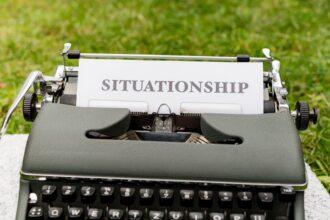The amygdala, a small almond-shaped cluster of nuclei located deep within the temporal lobes of your brain, plays a pivotal role in processing emotions. It acts as your brain’s emotional center, responsible for detecting threats and triggering your fight-or-flight response. When you encounter a stressful situation, the amygdala springs into action, sending signals to other parts of your brain and body to prepare for a reaction.
This rapid response is crucial for survival, allowing you to react quickly to danger. However, this same mechanism can lead to emotional responses that may not always be appropriate or helpful in everyday situations. Understanding the amygdala’s function is essential for recognizing how it influences your behavior and emotional responses.
It is not just a reactive organ; it also interacts with other brain regions, such as the prefrontal cortex, which is responsible for rational thinking and decision-making. When the amygdala is overly active, it can overshadow the more rational parts of your brain, leading to impulsive reactions driven by fear or anxiety. This interplay between the amygdala and other brain regions highlights the complexity of emotional processing and the importance of developing strategies to manage your emotional responses effectively.
Key Takeaways
- The amygdala plays a key role in processing emotions and triggering the body’s response to perceived threats.
- Signs of amygdala hijack include heightened emotional reactions, impulsive behavior, and difficulty thinking rationally.
- Emotional reactivity can have a significant impact on mental and physical health, leading to increased stress and potential health issues.
- Strategies for managing emotional reactivity include deep breathing, mindfulness techniques, and grounding exercises.
- Building resilience through stress management, self-care, and seeking professional help can help individuals develop emotional regulation skills and improve their overall well-being.
Recognizing Amygdala Hijack: Signs and Symptoms
You may have experienced moments when your emotions seemed to take control, leading to reactions that felt disproportionate to the situation at hand. This phenomenon is often referred to as “amygdala hijack.” During these episodes, your amygdala overrides your rational thinking, causing you to react impulsively or with heightened emotional intensity. Recognizing the signs of amygdala hijack is crucial for regaining control over your emotions and responses.
Common symptoms of amygdala hijack include sudden feelings of anger, anxiety, or fear that seem to arise without warning. You might find yourself reacting defensively or aggressively in situations that do not warrant such a response. Additionally, physical symptoms such as increased heart rate, rapid breathing, or muscle tension can accompany these emotional surges.
By becoming aware of these signs, you can begin to identify when your amygdala is taking over and take steps to regain control before your emotions dictate your actions.
The Impact of Emotional Reactivity on Mental and Physical Health
Emotional reactivity can have profound effects on both your mental and physical health. When you frequently experience intense emotional responses, it can lead to chronic stress, anxiety, and even depression. The constant activation of your stress response system can take a toll on your overall well-being, leading to feelings of overwhelm and helplessness.
Over time, this emotional turmoil can contribute to mental health disorders that may require professional intervention.
Chronic stress has been linked to various health issues, including cardiovascular disease, weakened immune function, and digestive problems.
When your body is in a constant state of alert due to emotional reactivity, it can lead to inflammation and other physiological changes that compromise your health.
Strategies for Managing Emotional Reactivity in the Moment
| Strategy | Description |
|---|---|
| Deep Breathing | Taking slow, deep breaths to calm the nervous system and reduce reactivity. |
| Grounding Techniques | Using sensory experiences to bring attention back to the present moment. |
| Positive Self-talk | Using affirmations and positive statements to counteract negative emotions. |
| Mindfulness Meditation | Practicing awareness of thoughts and emotions without judgment. |
| Physical Exercise | Engaging in physical activity to release built-up tension and stress. |
When you find yourself in a situation where your emotions are escalating, having strategies in place can help you regain control. One effective technique is deep breathing. By focusing on your breath and taking slow, deliberate inhales and exhales, you can activate your body’s relaxation response.
This simple practice can help calm your nervous system and reduce the intensity of your emotional reaction. Another strategy involves grounding techniques that bring your attention back to the present moment. You might try focusing on your surroundings or engaging your senses—notice the colors around you, feel the texture of an object in your hand, or listen to the sounds in your environment.
These techniques can help distract you from overwhelming emotions and create a sense of stability amidst chaos. By incorporating these strategies into your daily life, you can build resilience against emotional reactivity and respond more thoughtfully in challenging situations.
Developing Emotional Regulation Skills: Mindfulness and Meditation
Mindfulness and meditation are powerful tools for developing emotional regulation skills. By practicing mindfulness, you learn to observe your thoughts and feelings without judgment, creating space between your emotions and reactions. This awareness allows you to recognize when your amygdala is becoming activated and gives you the opportunity to respond more thoughtfully rather than react impulsively.
Meditation further enhances this practice by providing a structured way to cultivate inner calm and focus. Regular meditation can help strengthen the connections between the amygdala and prefrontal cortex, promoting better emotional regulation over time. As you become more adept at managing your emotions through mindfulness and meditation, you’ll likely find that you experience fewer instances of amygdala hijack and are better equipped to handle life’s challenges with grace and composure.
Building Resilience: Stress Management and Self-Care
Building resilience is essential for managing emotional reactivity effectively. Resilience allows you to bounce back from adversity and maintain a sense of well-being even in challenging circumstances. One key aspect of resilience is stress management.
By identifying stressors in your life and developing coping strategies, you can reduce their impact on your emotional state. Self-care practices play a vital role in building resilience as well. Engaging in activities that nourish your body and mind—such as regular exercise, healthy eating, adequate sleep, and social connections—can significantly enhance your ability to cope with stress.
When you prioritize self-care, you create a solid foundation for emotional stability, making it easier to navigate difficult situations without succumbing to overwhelming emotional reactions.
Communicating Effectively in Emotional Situations
Effective communication is crucial when navigating emotionally charged situations. When emotions run high, it’s easy to misinterpret others’ intentions or respond defensively. To communicate effectively during these times, it’s important to practice active listening.
This means fully focusing on what the other person is saying without formulating a response while they speak. By demonstrating empathy and understanding, you create an environment where open dialogue can flourish. Additionally, using “I” statements can help express your feelings without placing blame on others.
For example, instead of saying “You always make me angry,” try expressing it as “I feel frustrated when this happens.” This approach fosters constructive communication and reduces defensiveness in others, allowing for more productive conversations even in emotionally charged situations.
Setting Boundaries and Managing Triggers
Setting boundaries is an essential skill for managing emotional reactivity effectively. By establishing clear limits with others regarding what behaviors are acceptable or unacceptable, you create a sense of safety that allows you to navigate relationships more comfortably. Boundaries help protect your emotional well-being by ensuring that you are not overwhelmed by others’ demands or expectations.
In addition to setting boundaries, identifying triggers that provoke strong emotional reactions is crucial for managing reactivity. Triggers can be specific situations, words, or even people that elicit intense feelings within you. By recognizing these triggers, you can develop strategies to avoid or cope with them more effectively.
This proactive approach empowers you to take control of your emotional responses rather than allowing external factors to dictate how you feel.
Seeking Professional Help: Therapy and Counseling
If you find that managing emotional reactivity becomes overwhelming or unmanageable on your own, seeking professional help can be a valuable step toward healing and growth. Therapy or counseling provides a safe space where you can explore your emotions with a trained professional who can offer guidance and support tailored to your needs. Therapists often employ various techniques to help individuals develop healthier coping mechanisms and improve emotional regulation skills.
Cognitive-behavioral therapy (CBT), for example, focuses on identifying negative thought patterns that contribute to emotional reactivity and replacing them with more constructive beliefs. By working with a therapist, you can gain insights into your emotional responses and learn effective strategies for managing them in everyday life.
Creating a Supportive Environment: Social Connections and Relationships
The environment in which you live plays a significant role in shaping your emotional well-being. Surrounding yourself with supportive individuals who understand and validate your feelings can create a nurturing atmosphere that fosters resilience and emotional growth. Positive social connections provide a buffer against stressors and help you navigate challenging situations with greater ease.
Building strong relationships involves open communication and mutual respect. When you cultivate connections with people who encourage healthy expression of emotions, you’re more likely to feel safe sharing your thoughts and feelings without fear of judgment. This supportive network not only enhances your emotional well-being but also reinforces the skills you’ve developed for managing reactivity effectively.
Practicing Emotional Intelligence: Understanding and Managing Emotions
Emotional intelligence is the ability to recognize, understand, and manage both your own emotions and those of others. Developing this skill is essential for navigating life’s challenges with grace and composure. By practicing self-awareness—being attuned to your emotions—you can identify when you’re experiencing heightened reactivity and take steps to address it before it escalates.
Additionally, empathy plays a crucial role in emotional intelligence. By understanding others’ perspectives and emotions, you can respond more compassionately rather than reactively in interpersonal situations. This not only enhances your relationships but also contributes to a greater sense of connection with those around you.
As you cultivate emotional intelligence through practice and reflection, you’ll find that managing emotional reactivity becomes increasingly intuitive and effective. In conclusion, understanding the amygdala’s role in emotional processing is essential for recognizing when you’re experiencing amygdala hijack and developing strategies for managing emotional reactivity effectively. By incorporating mindfulness practices, building resilience through self-care, communicating effectively in emotionally charged situations, setting boundaries, seeking professional help when needed, creating supportive environments, and practicing emotional intelligence, you empower yourself to navigate life’s challenges with greater ease and confidence.
If you’re looking to understand how to stop an amygdala hijack, it’s essential to explore techniques that can help manage stress and emotional responses. One valuable resource is an article on Unplugged Psych, which delves into various strategies for emotional regulation and mindfulness practices. These techniques can be instrumental in calming the amygdala and preventing it from taking over your rational thinking. For more insights, you can read the related article on their website by visiting this link.
🧠 Your Trauma Is Rewiring Your Brain: Here’s How to Undo It | A Neuroplasticity & Somatic Guide
FAQs
What is an amygdala hijack?
An amygdala hijack is a term used to describe an immediate and overwhelming emotional response that is out of proportion to the actual stimulus because it is triggered by the amygdala, the part of the brain responsible for emotional processing.
What are the symptoms of an amygdala hijack?
Symptoms of an amygdala hijack may include intense emotional reactions, such as anger, fear, or anxiety, as well as physical responses like increased heart rate, sweating, and a sense of being out of control.
How can I stop an amygdala hijack?
To stop an amygdala hijack, it is important to practice techniques that help regulate emotions, such as deep breathing, mindfulness, and cognitive reframing. It is also helpful to develop self-awareness and recognize the early signs of an amygdala hijack.
What are some strategies for preventing amygdala hijack?
Strategies for preventing amygdala hijack include practicing regular stress-reducing activities, such as exercise, meditation, and relaxation techniques. It is also important to develop healthy coping mechanisms and build emotional resilience.
When should I seek professional help for amygdala hijack?
If you find that your amygdala hijack episodes are significantly impacting your daily life, relationships, or mental health, it is important to seek professional help from a therapist or mental health professional. They can provide support and guidance in managing and reducing amygdala hijack responses.




